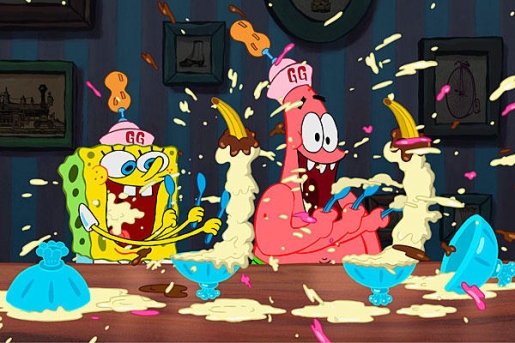
SpongeBob and Patrick, engaging in obnoxious hijinks.
When it comes to children, their little minds are like sponges. Whatever’s going on around them generally affects them, and television is no different from books or speaking or the amount of lead in the paint in the household when it comes to influencing brain functioning. Children who watched SpongeBob SquarePants had less self-control and focus than kids who watched more sedate children’s programming. It’s all about the pacing, experts believe, and not the content.
“It’s not … all television that creates deficits in attention, it’s the pacing of the program, what we call the ‘formal features,’ that actually matter,” said Dimitri Christakis of the Seattle Children’s Research Institute at the University of Washington. Christakis didn’t participate in the study, but he did pen an accompanying article in Pediatrics. “It would be wrong for people to overgeneralize this and say SpongeBob is a bad show and Caillou is a good show. It’s not about the specific shows. It’s about the features of those shows.”
If he won’t say it, I will. SpongeBob is a bad show. for that matter, Caillou is ALSO a bad show, because it’s so obnoxious. Still, when it comes to pace, Caillou and company are much slower and calmer than SpongeBob and Patrick, which should make paying attention to things afterward a whole lot easier for the kids if they avoid the yellow spongy moron before doing their homework.
Tags: fast paced cartoons, how cartoons affect kids’ brains, SpongeBob SquarePants, Angeline Lillard, University of Virginia, Dimitri Christakis, Seattle Children’s Research Institute, University of Washington, Pediatrics, brain function and television pacing, television, education, children, children’s television







